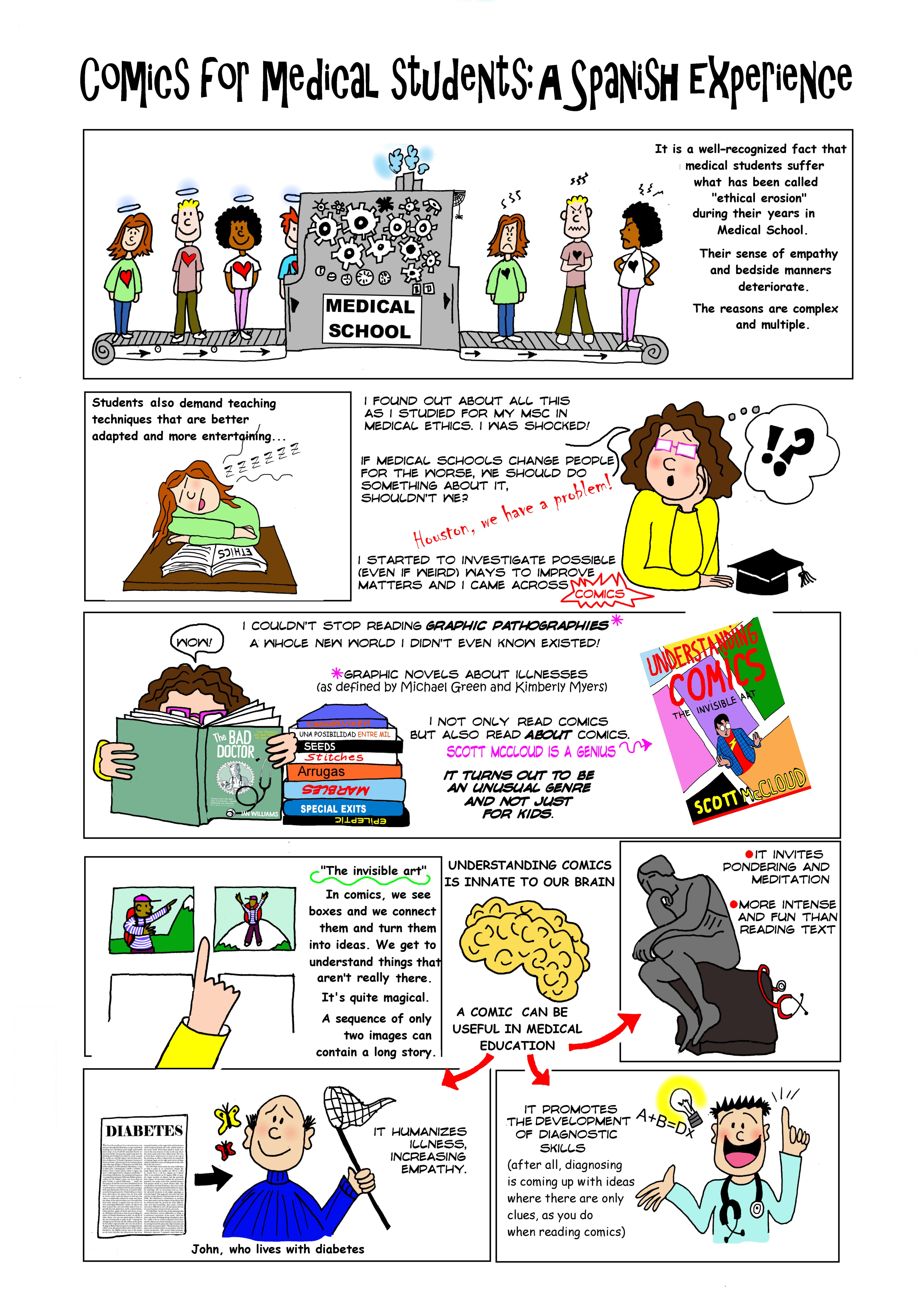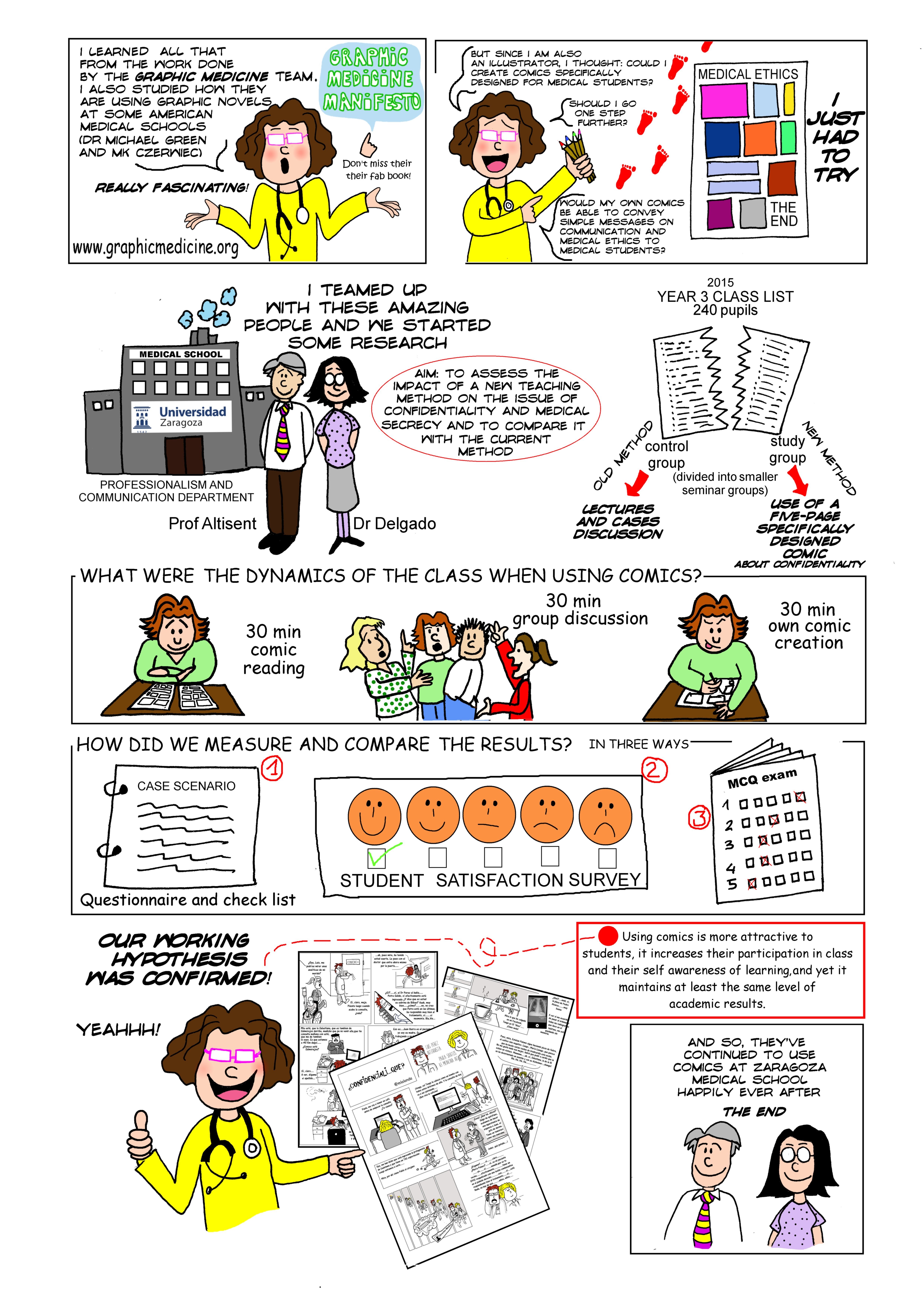Abstract
At the University of Zaragoza in Spain we developed an innovative way to teach the concept of confidentiality to medical students, which we tested by comparing the use of customized comics with more traditional methods. We proved that using comics is more attractive to students than lectures and class discussions, that it increases class participation and students’ self-awareness of learning, and that it maintains the same academic results. We share our experience visually in a two-page comic.
Figure. Comics for Medical Education: A Spanish Experience


Caption
Comics are increasingly used in medical schools as a tool for students to reflect on their own experience, increase their empathy towards patients, and improve their communication skills [1]. However, as far as we are aware, using customized comics to teach students specific content in health care ethics has not been attempted anywhere before. At the University of Zaragoza in Spain, we developed an innovative educational project: we created comics about confidentiality specifically for medical students and used them to teach preclinical students as part of their compulsory training. We’re now so convinced that comics should be used to teach even the most ethically complex concepts that we use a comic format to explain our experience to you as readers.
References
-
Green MJ. Use of comics in medical education and patient care. BMJ. 2010;340:c863. http://www.bmj.com/content/340/bmj.c863. Accessed November 29, 2017.




